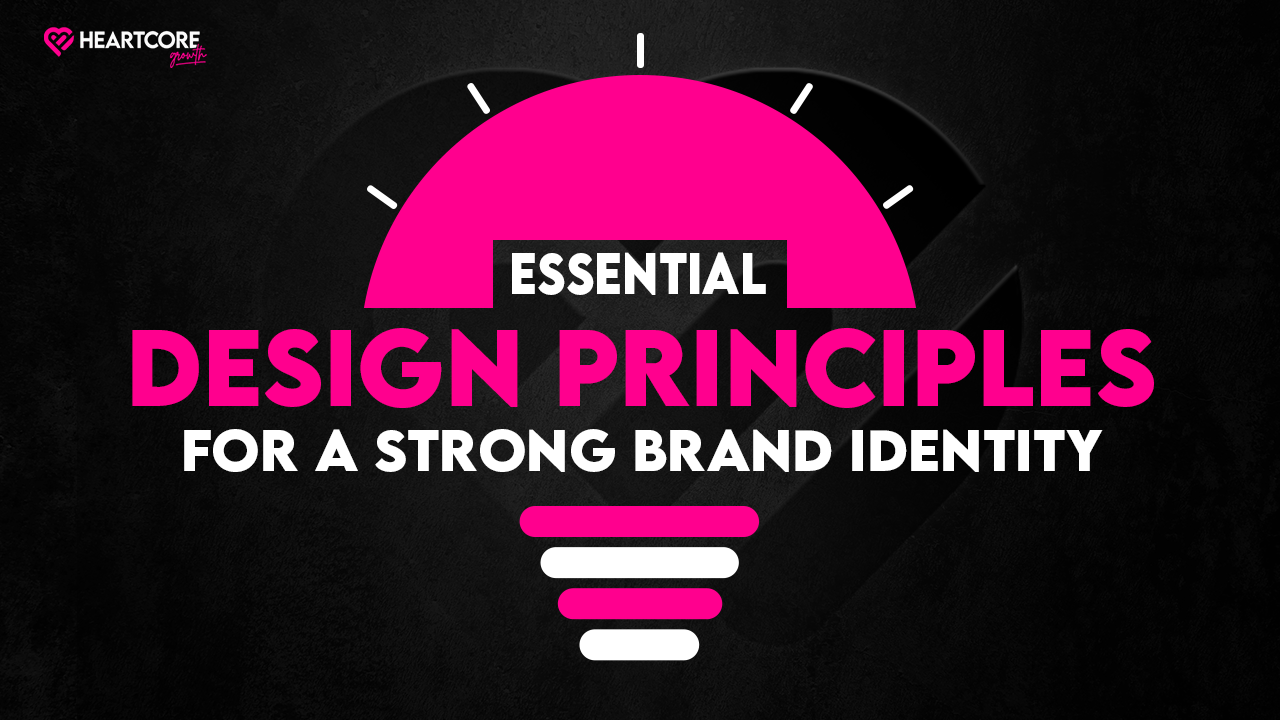Menu
Essential Design Principles for a Strong Brand Identity

Having a strong brand identity is crucial for standing out and making a lasting impression. A well-crafted brand identity not only distinguishes your brand from competitors but also builds trust and loyalty among your audience. At the heart of a compelling brand identity are the design principles that guide its creation and maintenance. This article explores essential design principles for a strong brand identity, offering insights and practical tips for developing a brand that resonates and endures.
Understanding Brand Identity
Defining Brand Identity
Brand identity is the visual and emotional representation of your brand. It encompasses everything from your logo, color scheme, and typography to your imagery and overall style. It’s how you communicate your brand’s values, mission, and personality to the world.
The Elements of Brand Identity
Key elements of brand identity include:
- Logo: The face of your brand, providing immediate recognition.
- Color Scheme: Evokes emotions and associations with your brand.
- Typography: Sets the tone and personality of your brand’s communications.
- Imagery: Visual elements that support your brand’s message and values.
The Role of Design Principles
Design principles are the foundational guidelines that inform every aspect of your brand’s visual identity. They ensure that all design choices work together cohesively to convey a clear, consistent message.
Core Design Principles for Strong Brand Identity
A. Consistency
Consistency is vital for building a recognizable and reliable brand. It means maintaining uniformity across all brand touchpoints, from your website and social media profiles to packaging and marketing materials. Consistent use of colors, fonts, and imagery helps reinforce your brand identity, making it easier for customers to recognize and trust your brand.
B. Simplicity
Simplicity in design can enhance brand recognition and memorability. A cluttered or overly complex design can confuse your audience and dilute your brand message. Strive for clean, straightforward designs that communicate your brand’s essence clearly and effectively. For instance, think of iconic brands like Apple and Nike, whose simple, minimalist designs are instantly recognizable.
C. Relevance
Your design should be relevant to your brand’s values, mission, and target audience. This means choosing design elements that resonate with your audience and reflect what your brand stands for. For example, a luxury brand might use elegant fonts and a sophisticated color palette, while a playful, youth-oriented brand might opt for bright colors and fun graphics.
D. Flexibility
A strong brand identity needs to be adaptable across various mediums and platforms. Your design should look good and function well whether it’s on a business card, a mobile app, or a billboard. Flexibility ensures that your brand maintains its integrity and impact regardless of where it appears.
E. Uniqueness
Differentiation is key to standing out in a crowded market. Your brand design should include unique elements that set you apart from competitors. This could be a distinctive logo, an unusual color combination, or a unique visual style. Uniqueness helps your brand capture attention and stay memorable.
Implementing Design Principles
Creating a Brand Style Guide
A brand style guide is essential for maintaining consistency in your brand’s visual and written communication. It outlines the specific colors, fonts, logo usage, and other design elements that define your brand. A comprehensive style guide ensures that anyone working on your brand’s materials follows the same guidelines, preserving the integrity of your brand identity.
Choosing the Right Design Tools
Utilizing the right design tools can streamline the process of creating and maintaining your brand identity. Tools like Adobe Creative Suite and Figma offer powerful features for designing professional-quality brand materials. These tools provide templates, design elements, and collaboration features that help you create consistent, high-quality designs efficiently.
Collaborating with Professional Designers
Working with professional designers can bring a fresh perspective and expertise to your brand identity. Professional designers understand how to apply design principles effectively and can help you create a cohesive and compelling brand identity. When selecting a design partner, look for someone with experience in your industry and a portfolio that reflects their ability to create strong brand identities.
You May Also Want To Read: How to Properly Plan For a Website Redesign Project
Case Studies of Successful Brand Identities
Case Study 1: Apple
Apple’s brand identity is a masterclass in simplicity and consistency. Their minimalist design, consistent use of the apple logo, and clean typography make their products and marketing materials instantly recognizable. Apple’s design principles convey innovation, quality, and elegance, reinforcing their position as a premium brand.
Case Study 2: Coca-Cola
Coca-Cola’s brand identity is built on strong consistency and relevance. The iconic red and white color scheme, the classic logo, and the use of joyful imagery create a cohesive and emotionally resonant brand identity. Coca-Cola’s design principles effectively convey happiness, tradition, and refreshment.
Measuring the Effectiveness of Your Brand Identity
Methods for Assessing Impact
To measure the effectiveness of your brand identity, track key performance indicators (KPIs) such as brand recognition, customer loyalty, and overall engagement. Surveys, focus groups, and social media analytics can provide valuable insights into how your audience perceives your brand.
Key Performance Indicators (KPIs)
Key KPIs to monitor include:
- Brand Recognition: The extent to which your brand is known by your target audience.
- Customer Loyalty: The level of repeat business and customer advocacy.
- Engagement: Interactions with your brand on social media, website traffic, and other platforms.
Design principles for strong brand identity are essential for creating a brand that stands out, resonates with your audience, and endures over time. By adhering to principles like consistency, simplicity, relevance, flexibility, and uniqueness, you can build a brand that is both memorable and impactful. Continuously refining and evolving your brand design is key to maintaining its strength and relevance in a dynamic market.
Ready to build a strong brand identity? Contact us today to explore our design services and discover how we can help you create a compelling and cohesive brand identity that stands out.









